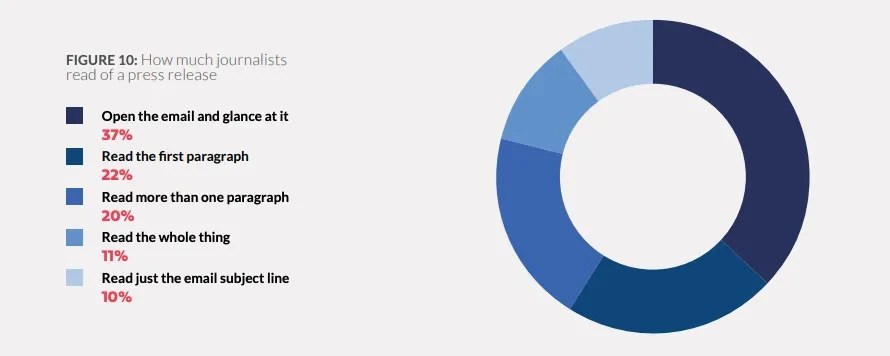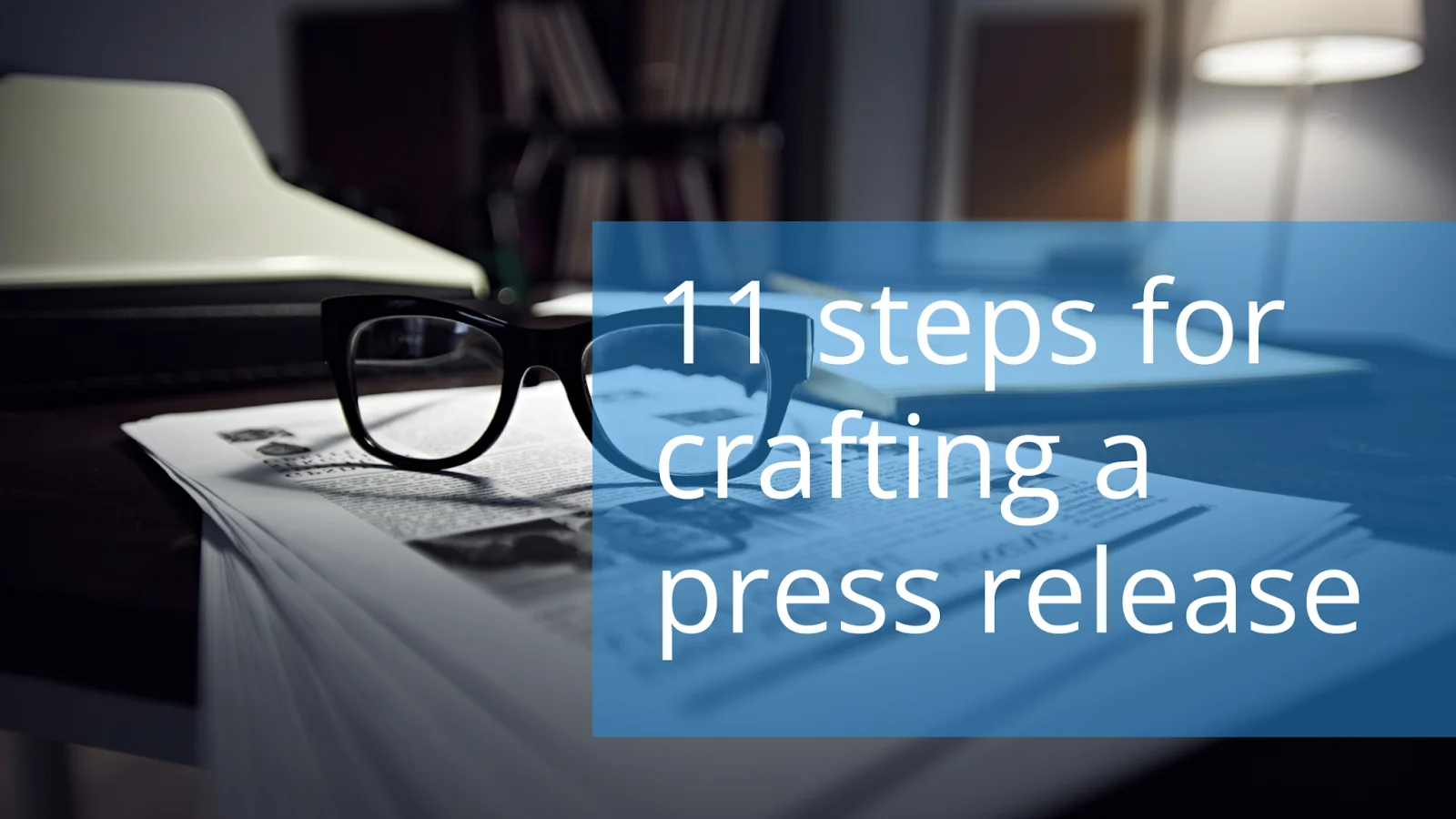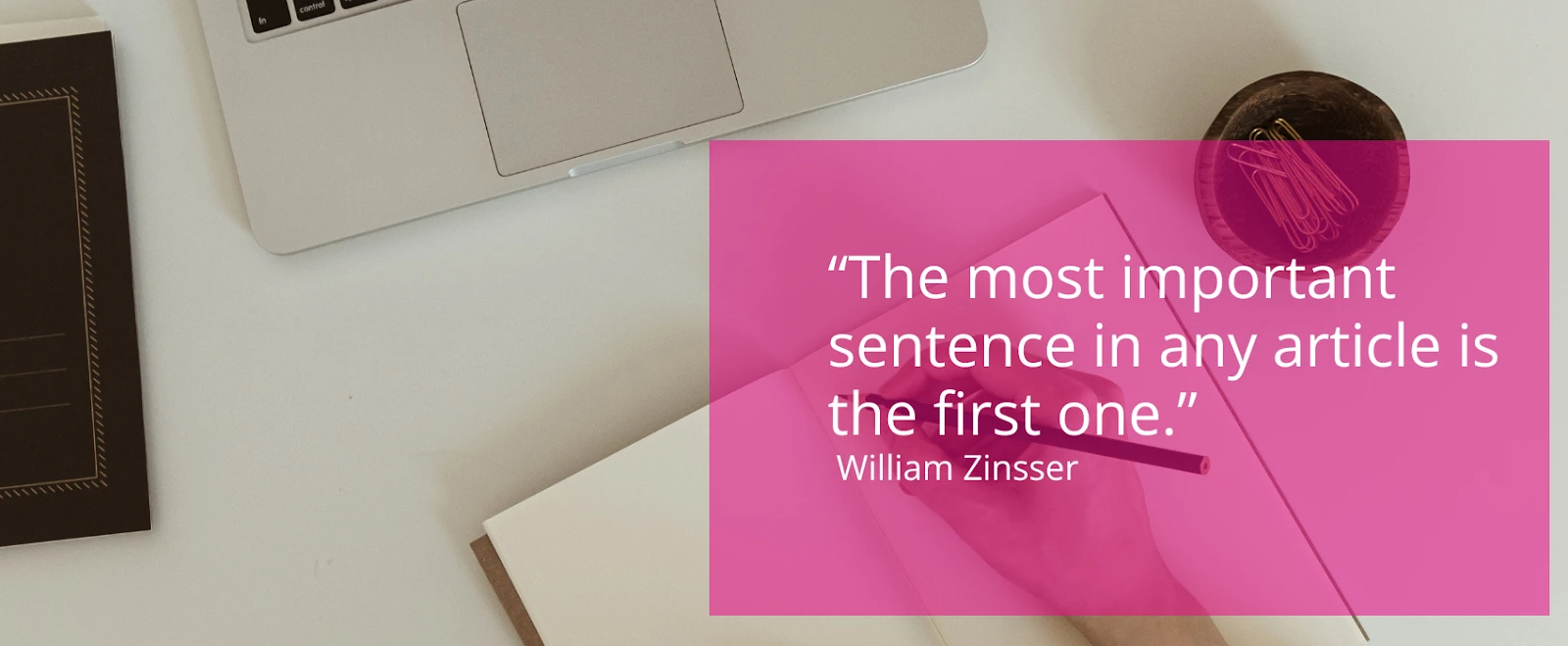In an era where 300 billion emails are sent daily, and the average person’s attention span has shrunk to just 8 seconds, how can your news possibly stand out?
The answer might surprise you: it’s not about sending more messages but about crafting smarter.
Press releases provide information about a significant event to news media, and how you build them can have significant impact on your ability to generate coverage.
But let’s face it. Press releases come with their own challenges:
- How do you make your announcement truly newsworthy in a sea of information?
- With journalists receiving up to 100 pitches daily, how do you ensure yours doesn’t end up in the digital trash?
- In a world of 280-character posts, how do you convey complex information concisely without losing impact?
- And perhaps most crucially, how do you transform a simple announcement into a powerful tool that boosts your brand’s visibility and credibility?

If these questions resonate with you, you’re in the right place. This guide is designed to tackle these common communication hurdles head-on. It provides practical strategies to transform your press releases from mundane announcements into compelling narratives that demand attention.
Key takeaways
- Boost visibility and credibility by crafting press releases that capture media attention and expand your reach.
- Avoid common pitfalls. Craft clear, newsworthy, and well-timed press releases to maximize your chances of media coverage.
- Master the 12 essentials. Incorporate a strong headline, clear lead, team alignment, strategic timing, supporting data, visuals, and a concise boilerplate to create a compelling press release.
Top benefits of crafting a strong press release
A well-crafted press release does more than just announce your news—it gets you noticed, extends your reach, and even builds credibility. Here’s how.

Increases your chances of getting published
When done right, a press release boosts your chances of media coverage. With 49 percent of journalists receiving at least six pitches daily—and 12 percent getting over 21—standing out is crucial. Providing key details upfront, like facts, figures, and a compelling story, makes it easier for journalists to pick up your news. The clearer and more relevant your release, the better its chances of cutting through the noise and gaining coverage.
Extends your reach beyond traditional media
Press releases aren’t just for journalists—they can amplify your message across social media, websites, and industry blogs. Done right, they can reach beyond the media to potential clients, customers, and a wider audience seeking relevant information. This amplification extends your story across platforms, maximizing visibility and impact.
Creates internal alignment on your messaging
Along with sharing news externally, a press release aligns your team internally. For a product launch, for example, the press release process helps your team refine the story, clarify key benefits, and highlight the most crucial aspects for your audience. This clarity ensures your company delivers a consistent message across all channels, sharpening the story and improving how your team understands and shares the news.
Boosts brand visibility, credibility, and authority
Press releases boost brand exposure. With the right keywords, they improve search visibility and drive traffic to your site. Plus, when picked up by reputable media, they add third-party validation and strengthen brand authority. A polished press release also shows that your brand understands its industry and audience, positioning you as an expert.
Common press release mistakes to avoid
Even a small misstep can cost you coverage, and all your hard work could go unnoticed. Make sure you avoid these press release pitfalls to keep your news in the spotlight and get the attention it deserves
Focusing only on your business
A press release that’s all about you and doesn’t connect with a broader audience will fall flat. Journalists want stories that speak to their readers, not self-promotion. If your release only talks about how great your company is without showing how it benefits others or solves a problem, expect it to be overlooked.
Not sticking to the point
Press releases that don’t get straight to the point often get passed over. Journalists have limited time and won’t sift through paragraphs to find key information. If they can’t understand your press release within the first few sentences, you’ll likely lose them. Keep your release focused on the core message, in a way that a general audience will understand, and ditch the jargon and fluff.
Issuing something that’s not newsworthy
Not every update is press release material. If your story doesn’t have broad appeal, it might not be newsworthy enough for journalists to care. A press release should highlight something that matters—significant corporate news, a major product launch or event, or an industry-changing partnership. If it doesn’t meet that bar, consider a blog post or social media update instead.
Burying the lede
Your headline should grab attention, not hide the story. If your key message is buried under too many words, journalists might not even glance at it.

Source: How frequently journalists read press releases.
And since most journalists give press releases just a quick skim, you’ve only got a small window to make your point. Make your headline clear, direct, and compelling from the start.
Timing it wrong
When you release your news, it can be just as important as what you’re releasing. Competing with major industry stories or national events means your press release might get buried. Check your timing fits into the current industry conversation and that your news is fresh. A well-timed press release will make a bigger splash, while poor timing can leave even the best stories ignored.
11 Steps for writing a compelling press release

A great press release follows a formula. By nailing down the essentials and delivering your story clearly and compellingly, you can ensure your news gets the coverage it deserves. Here are the steps to make yours stand out.
1. Make sure it’s truly newsworthy
Before writing, consider whether your announcement is worth a press release. Why should your audience care? What makes this story compelling to the general audience? If you’re unsure, seek an objective opinion. A release with little substance or broader relevance won’t gain traction. Make sure your news has a compelling hook and holds interest beyond your company walls.
2. Craft a strong headline
Your headline is your first chance to grab attention. Make it short, impactful, and focused on the main news. Only the first few words can be visible on mobile, so lead with the most important aspect. A strong headline quickly conveys your story and hooks the journalist—and their readers—right from the start.
3. Align your message with the team
Your press release needs to tell a unified story that resonates with your audience. Verify that everyone internally is on the same page about the key message and tone. Conduct a press release Q&A to gather all necessary details and clarify the core message. This alignment streamlines the writing process, prevents miscommunication, and guarantees a consistent message across all channels.
4. Write a clear, concise, jargon-free release
Your lead—the opening paragraph—should capture the heart of your announcement in one or two sentences and clearly state the news. Be direct, and don’t make journalists guess. As William Zinsser said, “The most important sentence in any article is the first one. If it doesn’t induce the reader to proceed to the second sentence, your article is dead.” A strong lead hooks the reader, making your press release more likely to grab attention.

Beyond the lead, aim for clarity and simplicity throughout your press release. Avoid jargon or overly technical terms that could confuse readers. Stick to plain language, explain complex ideas simply, and focus on the core message without unnecessary fluff. This makes your story more accessible, impactful, and appealing to a wider audience.
5. Nail down your timeline
Timing plays a crucial role in a press release’s success. Start by planning the writing, review, and approval phases, working backward from your target release date to avoid rushing and missing key details.
Once ready, choose your release date carefully. Align your news with relevant industry events or trends, and aim for early mornings on Tuesdays or Wednesdays for better media pickups. Avoid competing with major industry or global news unless your story is directly tied to those events. Thoughtful timing helps your release get noticed and doesn’t get buried under bigger stories.
6. Incorporate relevant SEO keywords
To broaden the reach of your press release, include relevant SEO keywords. Place these strategically in your headline and body text. This helps improve search visibility and your chances of media pickups. However, keywords should be used naturally and not forced, as they can affect readability. Remember, SEO isn’t just for search rankings. It also increases the chances of attracting the right audience.
7. Support with quotes and data
Quotes from stakeholders, industry experts, or customers add authority and depth to your story. Data and statistics can also strengthen your release, providing proof points that back up your announcement. Using direct quotes and hard facts helps contextualize the story and makes it more compelling to journalists and their readers.
8. Plan for visuals
Images are powerful storytelling tools. Online publications often expect visuals to accompany press releases, so provide a high-quality, relevant image that enhances your story. Whether it’s a product shot, team photo, or infographic, a strong visual can make your press release more engaging and improve its chances of being picked up. Double-check that your visuals reinforce your message and make an impact.
9. Ensure a well-planned distribution strategy
Sending your press release to the same list of outlets every time without considering their specific focus risks it being ignored. Ensure you have a well-planned pitch and direct outreach strategy paired with your press release distribution that is customized to fit the audience of each publication, ensuring it’s relevant to their readership.
By aligning your news with the needs of specific media outlets, you increase your chances of getting noticed and avoid the risk of your release being overlooked as spam.
10. Include a clear call to action
Your press release should tell readers what to do next. Whether it’s visiting your site, signing up for an event, or learning about your product, provide a clear next step. Include contact information or relevant links to guide the reader toward action, making it easy for them to follow through.
11. Measure press release success
Once your press release is out, tracking its performance helps you assess its impact. Key metrics include the volume of media pickups, audience reach, quality of coverage, and how well the story resonates with your audience.
Monitor website traffic, social media shares, and search visibility after the release goes live. Track how many outlets covered your story and the extent of audience engagement. Consistently reporting these metrics to your team will help refine future press releases and inform your PR strategy.
FAQs
Focus on making your press release newsworthy, clear, and relevant. A compelling headline, a strong opening paragraph, and valuable quotes and data can help your press release stand out.
Look for industry trends and key issues your company is addressing. For example, if you’re launching a product that solves a widespread problem in your industry, that’s a strong angle. Consider how your announcement could appeal beyond your immediate audience. If a tech company adopts a four-day workweek, it might catch the attention of HR publications, broadening your reach.
Pay attention to industry cycles, trends, and global events. If your press release ties into a larger conversation or current events, it will likely resonate more with your audience and have a better chance of getting picked up.
Your press release is the bridge to your audience
A press release does more than just share news—it’s the link that connects your brand to a wider audience. It’s a chance to control your story, strengthen your brand’s voice, and establish credibility. Each carefully chosen word, strategic headline, and well-timed release builds a story that informs, captivates, and engages.
By keeping your press releases relevant, concise, and compelling, you’re helping tell your brand’s story and sharing your news in a way that creates a ripple effect, boosting your brand’s recognition. Over time, your press releases can build trust with your audience, attract media interest, and ultimately expand your reach.




